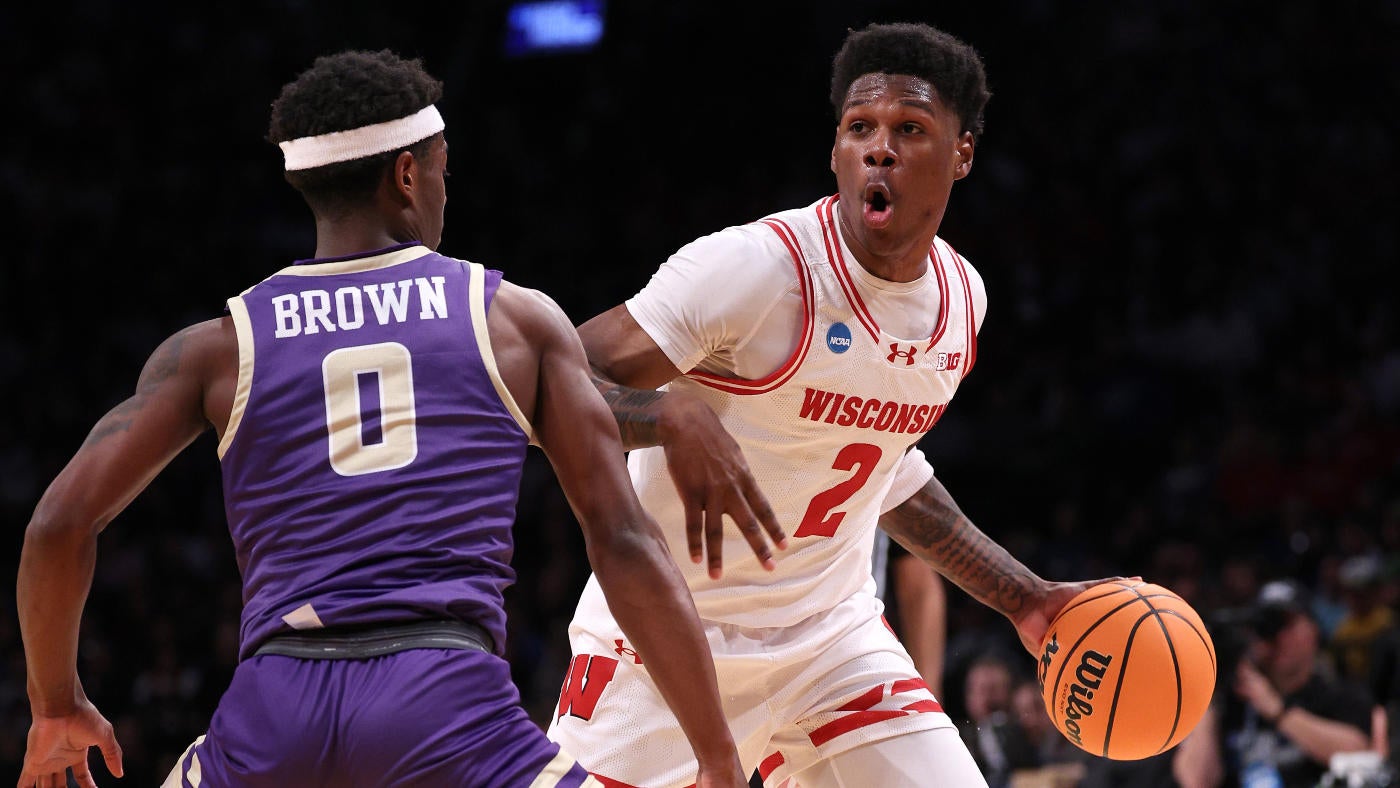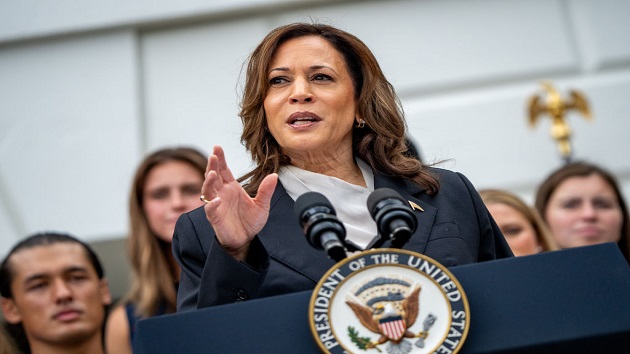College basketball transfer rankings 2024: How top five players who were in portal will impact their new teams
Written by Lucky Wilson | KJMM.COM on July 30, 2024

The biggest waves, it turns out, can start with the smallest ripples. On March 21, SMU fired Rob Lanier after just two seasons, a surprising move ahead of the Mustangs’ transition to the ACC.
Just two and a half weeks later, thanks to a bevy of moves in between, John Calipari shockingly departed Kentucky for Arkansas. The basketball offseason — already hectic enough as it is — hit overdrive. One of the country’s top programs was without a coach. One of the country’s top coaches was without a roster.
This year’s coaching carousel and transfer portal dance — largely interwoven — took everyone for a spin, and it took until mid-July for all of this offseason’s top movers to find a home.
CBS Sports’ David Cobb ranked the top 80 transfers, and with things (mostly) finally settled, here’s how his top five will help their new teams.
1. Johnell Davis (FAU to Arkansas)
Coming off an incredible 2023 Final Four run, FAU never really met the sky-high expectations it had in 2023-24. Still, with that iconic March Madness fresh in everyone’s mind, Dusty May took the Michigan job, and seven of his former Owls players decided to leave FAU behind as well. Davis wasn’t only the best of that bunch but, in David’s eyes, the best of any transfer this offseason.
He’s also a perfect fit for an Arkansas roster that is an amalgamation of various parts. Calipari’s first Razorbacks roster will include some players he brought along from Kentucky, some transfers from other programs, some of his high-school recruits who had been committed to Kentucky and just one scholarship player from last year’s Razorbacks, Trevon Brazile.
It’s anyone’s guess as to what this group will look like, but Davis is an awfully good place to start because of both his positional flexibility and his vast offensive repertoire. Davis technically slotted in as the power forward at FAU according to KenPom.com, and at 6-foot-4 he more than held his ground on the boards; his 6.3 rebounds per game were 14th nationally among all players 6-4 or shorter, and he posted a very respectable 16.6% defensive rebounding rate.
But where Davis shines most is offensively. An absolutely elite shooter, Davis shot 41% from 3-point range and ranked in the 96th percentile nationally on catch-and-shoot jumpers (1.35 points per possession) last year per Synergy. And if that’s all that Davis was — an outstanding shooter and strong rebounder — he’d still be a very good player.
Instead, he adds to that combination a terrific floor game. Davis is more than capable handling the ball and especially good in pick-and-roll and isolation situations. And while it’s not a big part of his game, Calipari can use Davis as a fun chess piece on handoffs. According to Synergy, Davis posted 1.535 points per handoff possession, which ranked in the 99th percentile nationally, albeit on a small sample size.
He especially loves this action from the top of the key, and he is an adept reader of how both his defender and the handoff player’s defender react. He has the handle and speed to get to the rim, the range to step back and the composure and shooting touch to get to his spots in the midrange.
Davis is the perfect piece for a new-look roster. He can be the centerpiece, running the offense and/or being the lead individual creator, but he can also be a supporting piece as a terrific off-ball shooter. Whatever the case, as Calipari gets his bearings in his new home, he’ll be able to lean on Davis heavily.
2. Kadary Richmond (Seton Hall to St. John’s)
Richmond started his career as an intriguing but little-used player at Syracuse before transferring to Seton Hall, where he turned that intrigue into production. Richmond had four 20-point double-doubles, tied for third-most among Big East players, in 2023-24, and his 15.7 points per game were 11th in the conference. Furthermore, he graded out as the Pirates’ top defender at EvanMiya.com.
Though Richmond’s 3-point shooting fell precipitously year-over-year (44% in 2022-23, 27% last year), he improved in other aspects, especially as a ball handler. For the third straight year, his assist rate rose while his turnover rate fell, and he became much more adept attacking in pick-and-roll sets. Richmond’s 201 points out of these possessions was tied for 28th in Division I and most among Big East players, per Synergy.
|
Kadary Richmond Pick-and-Roll Possessions |
2022-23 |
2023-24 |
|---|---|---|
|
Points per possession |
92 |
201 |
|
Points per possession |
0.713 |
0.882 |
|
Turnover rate |
20% |
14% |
|
Score pct |
33% |
41% |
Standing 6-6, Richmond has the size and strength to score through bigger players and bury, shield off and/or shoot over smaller defenders. But it’s not just his size. He has great body control and uses pump fakes and a tight handle to contort his way to the basket. And when that short jumper is falling, he is really tough to stop. Look at how he attacked Creighton — one of the nation’s best defenses — and three-time Big East Defensive Player of the Year Ryan Kalkbrenner.
That’s good stuff.
3. Tucker DeVries (Drake to West Virginia)
Tucker and his father, Darian, were a package deal from Drake to West Virginia, and Tucker figures to be the Mountaineers’ leader in the father-son duo’s debut season there.
Similar to Richmond, DeVries is a massive ball handler who presents major pick-and-roll problems for opposing defenses. Unlike Richmond, though, DeVries is an outstanding shooter rather than a downhill driver in these scenarios. And thanks to that shooting (49% on pick-and-roll 3-pointers), DeVries posted a sterling 1.047 points per possession in the pick and roll, fourth among 194 Division I players who ran at least 150 such possessions according to Synergy.
Also a very good player off handoffs (79th percentile) and on cuts (92nd percentile), DeVries’ statistical profile shows a player who hits the boards (21% defensive rebounding rate), moves the ball (21% assist rate) and draws fouls while not committing them. DeVries drew over five fouls per game last season, and when he gets to the free-throw line, he makes opponents pay at over 82%.
Though going from the Missouri Valley to the Big 12 is a massive jump, DeVries is comfortable with the system and top-tier shooting is always helpful. How he fares against bigger, faster and more athletic competition will be key as the DeVries duo looks to get West Virginia back on track.
4. AJ Storr (Wisconsin to Kansas)
Entering his third program in three years, Storr is a big-time scorer who had 11 games of 20+ points last season.
Storr shot 43.4% in each of his two seasons, first at St. John’s and last year at Wisconsin, but they came about in very different ways. With the Red Storm, Storr shot 40% on 3-pointers and 45% from 2-point range. With the Badgers, he shot 32% from 3-point range and 48% on 2-pointers, with a much higher share of his shots coming from inside the arc.
The clear top option on Wisconsin’s offense last year — no one took a higher percentage of his team’s shots in Big Ten play — Storr will slot in nicely on a Kansas roster that features a post offense fulcrum in Hunter Dickinson and a plethora of guards. In this setting, Storr, ideally, can be a strong driver and more of a catch-and-shoot option outside of it.
At 6-7, Storr has the length to be a strong slasher feeding off of the attention Dickinson and the Jayhawks’ guards get. His 265 points at the rim in 2023-24 led all Big Ten non-centers, and he’s willing to be patient on his catch, using pump fakes or changes of speed/direction to get going downhill. In his season-high 30-point performance against Northwestern in the Big Ten Tournament, Storr scored 15 points at the rim, made three 3-pointers and shot eight free throws. That’s the sort of shot profile Bill Self will be looking for from his highly coveted wing.
5. Oumar Ballo (Arizona to Indiana)
A mountain of a man at 7-foot and 260 pounds, Ballo joins his third school in his sixth year of college: two at Gonzaga including a redshirt followed by three at Arizona.
Ballo scored 465 points last year, and 335 came at the rim, tied for eighth in D-I. Another 95 came from free throws, though he took 192, good for just 49% from the charity stripe. He is as throwback as throwback gets: a true post-only scorer. He took exactly four jump shots (and made two!) all season, according to Synergy.
It makes sense, then, that he ended up at Indiana. Nearly 14% of the Hoosiers’ possessions ended in a post-up, the 10th-highest rate in D-I, and Mike Woodson is stubbornly pro-interior offense. Indiana ranked 349th in 3-pointers attempted last year. Ballo will be a part of many two-big lineups, likely alongside Malik Reneau, and that’s something he’s used to having started alongside Azuolas Tubelis at Arizona in 2022-23.
Overall, Ballo is the perfect fit for Woodson’s offense. He is adept as a post-up player and even better as a roller on pick and rolls. He fills up the points and rebounds columns of the stat sheet, and he’s done it reliably for multiple years. How it translates to Indiana’s success as a whole bears watching with Woodson on the hot seat.
The post College basketball transfer rankings 2024: How top five players who were in portal will impact their new teams first appeared on OKC Sports Radio.

 KVSP
KVSP 




